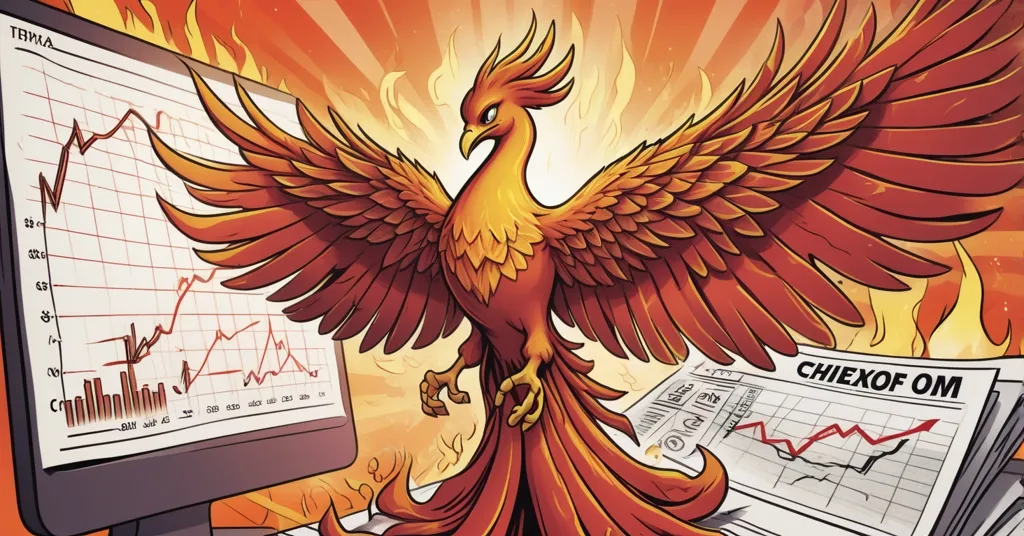Mantra’s OM Token Crashes 90%: Bold Recovery Plan Launched Amid Skepticism

Burn and Rebuild: Mantra Unveils Bold $OM Rescue Plan After Massive Collapse
Last Sunday, Mantra’s OM token plummeted 90% from $6.30 to under $0.50, erasing over $5 billion in market value. In response, Mantra has launched a comprehensive four-step recovery plan. However, investor skepticism persists, and technical analysis suggests potential further declines.
- OM token crashes 90%, erasing $5B in value
- Mantra launches four-step recovery plan
- Investor skepticism and technical analysis suggest caution
The crash was triggered by a sudden combination of events, including forced liquidations, large token deposits, and concerns about Mantra’s tokenomics and transparency. Forced liquidations occur when investors are unable to meet margin calls and must sell their assets, causing a downward spiral. Tokenomics refers to the economic policies and strategies of a cryptocurrency, and in this case, the community felt uneasy about Mantra’s approach. This perfect storm sent the OM token into a tailspin, a stark reminder of the volatile nature of the crypto market.
Mantra’s response, however, embodies the spirit of effective accelerationism, aiming to disrupt the status quo and rebuild stronger. Their four-step plan begins with a token buyback and burn program. This strategy involves repurchasing tokens from the market and then permanently removing them from circulation, which can potentially increase value by reducing supply. But Mantra doesn’t stop there; they’re also burning allocations for co-founders and the team, a move that signals their commitment to the project’s success. They’re collaborating with exchanges to dissect the crash and are launching a transparency dashboard to keep the community informed. This full-court press is designed to restore trust and stability in the wake of the crash.
Despite these efforts, the road ahead is uncertain. Investors remain wary, and technical analysis indicates a bearish trend, with a pattern known as a “bear pennant” suggesting the price could drop further. As of April 18, OM trades at $0.63, a significant drop from its February 2025 peak of $9.04. It’s a sobering reminder that in the world of crypto, the highs can be exhilarating, but the lows can be devastating.
The crash also highlighted the complexities of Mantra’s token ecosystem. There are two types of OM tokens: the older ERC-20 OM, which has been circulating since August 2020 and was at the heart of the sell-off, and the newer MANTRA Chain Mainnet OM, launched in October 2024 with a smaller circulation and team allocations still locked. This distinction underscores that the crash was driven by market panic, not insider actions.
In the face of this turmoil, Mantra’s response is a testament to the resilience and potential of blockchain technology. They’re not just trying to salvage their token; they’re fighting for the future of decentralized finance. With a $108 million ecosystem fund earmarked for technology development, partnerships, and marketing, Mantra is doubling down on its vision. But the question remains: will this be enough? The crypto community is watching closely, and the next few months will be a true test of Mantra’s resilience and the effectiveness of their recovery plan.
As we navigate this rollercoaster, it’s crucial to remember that the crypto revolution is about more than just price charts. It’s about challenging the status quo, championing decentralization, and pushing the boundaries of what’s possible. Mantra’s journey is a microcosm of the broader struggle to build a new financial paradigm, one that’s more open, transparent, and resilient.
In the words of MANTRA | Tokenizing RWAs (@MANTRA_Chain),
“In response to the significant and unexpected downward price action experienced by the $OM token earlier this week, our team has compiled this fact-based assessment. It addresses our community’s questions and outlines measures to strengthen market resilience.”
As we watch Mantra’s recovery unfold, it’s a reminder that the path to a decentralized future is never smooth. But with resilience, transparency, and a commitment to the core principles of crypto, even the most devastating crashes can be a catalyst for growth and innovation. The journey continues, and the stakes have never been higher.
Key Questions and Takeaways
What caused the OM token to crash?
The crash was triggered by a combination of forced liquidations, large token deposits, and concerns about the project’s tokenomics and transparency.
What steps has Mantra taken in response to the crash?
Mantra has introduced a four-step recovery plan, including a token buyback and burn program, burning co-founder and team allocations, working with exchanges to analyze the crash, and launching a transparency dashboard.
How are the two types of OM tokens different?
There are ERC-20 OM tokens, which have been in circulation since August 2020 and were involved in the crash, and MANTRA Chain Mainnet OM tokens, which launched in October 2024 and have a smaller circulation with team allocations still locked.
What is the current market sentiment regarding Mantra’s recovery plan?
Investor sentiment remains skeptical, with concerns about the effectiveness of the recovery plan and technical analysis suggesting possible further price drops.
What role does transparency play in the recovery plan?
A significant part of the recovery plan is the launch of a transparency dashboard to provide real-time insights into token metrics, aiming to prevent similar incidents and rebuild trust.



